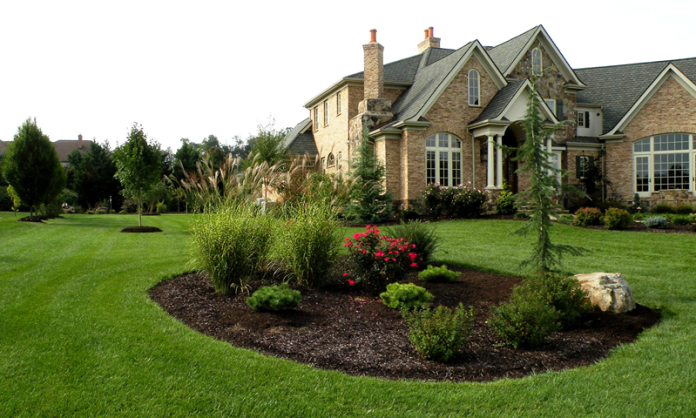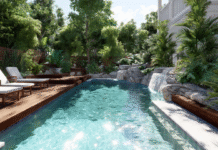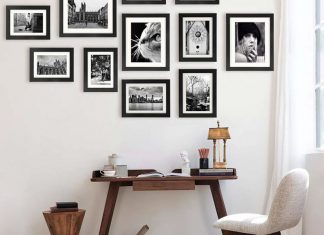A well-designed shed can be more than just a practical storage space—it can be a seamless extension of your home. With thoughtful landscaping, your shed can blend into its surroundings, creating a visually appealing and functional part of your outdoor space. Whether you want to transform your shed into a garden retreat, a backyard focal point, or a hidden gem, the right landscaping can make all the difference.
1. Positioning and Integration
Before diving into plants and pathways, consider how your shed fits within your garden layout. Position it in a way that complements the flow of your outdoor space rather than making it feel like an afterthought. Ideally, it should align with existing structures, such as a fence, deck, or patio, to create a sense of cohesion. If possible, orient it to take advantage of natural light and scenic views while keeping it accessible. If you find this challenging you can always engage a shed company to give you professional advice.
2. Pathways and Access
A shed that blends seamlessly into its surroundings should have a natural transition from the main house. Adding a pathway not only makes access easier but also enhances the overall aesthetic. Choose materials that match or complement your home’s existing walkways, such as:
- Stepping stones for a casual, garden-like feel
- Brick or pavers for a classic, structured look
- Gravel or wood chips for a rustic, cost-effective option
Curved pathways create a more organic, inviting approach, while straight paths provide a clean, modern feel. Framing the pathway with low shrubs, ground cover, or solar lights adds an extra touch of charm.
3. Planting Around Your Shed
Landscaping around the shed helps it feel intentional rather than out of place. The key is to create a soft transition between the structure and the garden by using plants that enhance rather than obscure it. Consider the following:
- Climbing plants such as jasmine, clematis, or ivy can add a charming, cottage-like feel by growing up trellises or along the shed’s walls.
- Flower beds and borders filled with perennials and seasonal blooms bring colour and vibrancy.
- Evergreens and shrubs provide year-round greenery, helping the shed blend into its surroundings in all seasons.
- Container plants placed near the entrance create a welcoming, flexible decorative touch.
For a natural look, layer plants of varying heights around the shed, using taller plants at the back and shorter ones at the front to create depth.
4. Roof and Wall Enhancements
If you want to take shed landscaping to the next level, consider integrating the shed into the garden itself with a green roof or living wall. These eco-friendly options not only look stunning but also improve insulation and encourage biodiversity.
- Green roofs can be planted with sedums, wildflowers, or grasses, making the shed feel like part of the natural landscape.
- Living walls with vertical planters filled with ferns, herbs, or succulents can soften the shed’s appearance and add texture.
Even a simple hanging basket or a mounted trellis with flowers can create a more inviting and homely look.
5. Outdoor Seating and Functional Spaces
Turning the area around your shed into a usable space helps integrate it into your daily life. Consider creating a small patio, deck, or seating area beside the shed. This can transform it into a retreat for reading, socialising, or gardening.
- A bench or bistro set tucked into a landscaped corner can create a cosy spot to enjoy the garden.
- A pergola or arbor over the entrance can add shade, structure, and a more inviting presence.
- A fire pit or outdoor fireplace nearby can make the space enjoyable year-round.
6. Lighting and Decorative Elements
Good lighting enhances the shed’s role in your garden, making it a focal point rather than a forgotten structure. Solar-powered lanterns, fairy lights, or LED uplighting can highlight the pathway, plants, or architectural details of the shed. String lights draped around the shed or a lantern at the entrance can create a warm and welcoming ambiance.
Decorative elements such as garden art, vintage signs, or a weather vane can personalise the space, making it feel more like an extension of your home.
7. Seasonal Adaptations
To keep your shed seamlessly integrated into your landscape throughout the year, plan for seasonal adjustments:
- Spring and summer: Add flowering plants and fresh mulch to refresh the space.
- Autumn: Introduce pumpkins, autumnal wreaths, and warm-toned foliage.
- Winter: Use evergreen garlands, lanterns, and weatherproof seating to maintain a cosy atmosphere.
Conclusion
With the right landscaping, your shed can become much more than a utilitarian structure—it can be an integral part of your home’s outdoor aesthetic. By considering placement, access, greenery, functional spaces, and decorative touches, you can ensure your shed not only serves its purpose but enhances the beauty of your garden. Whether it’s a charming retreat, a gardening hub, or a design feature, your shed has the potential to become a well-loved part of your home’s landscape.















